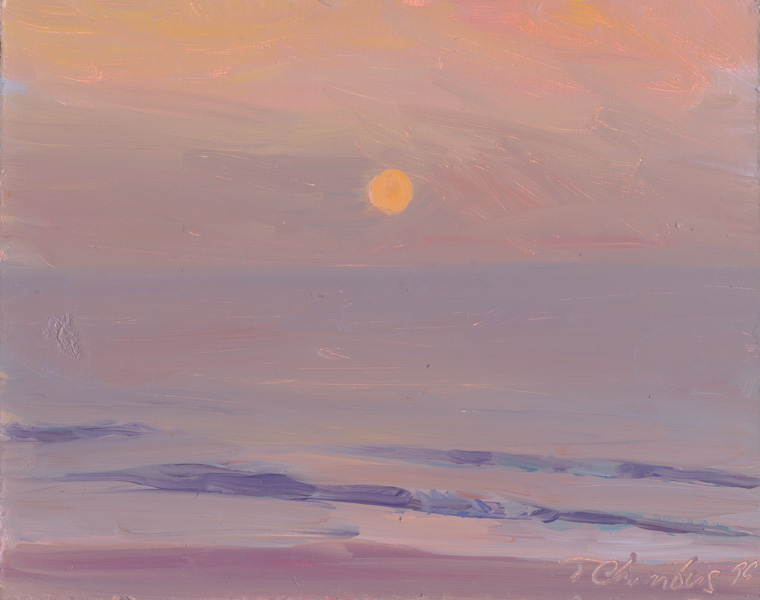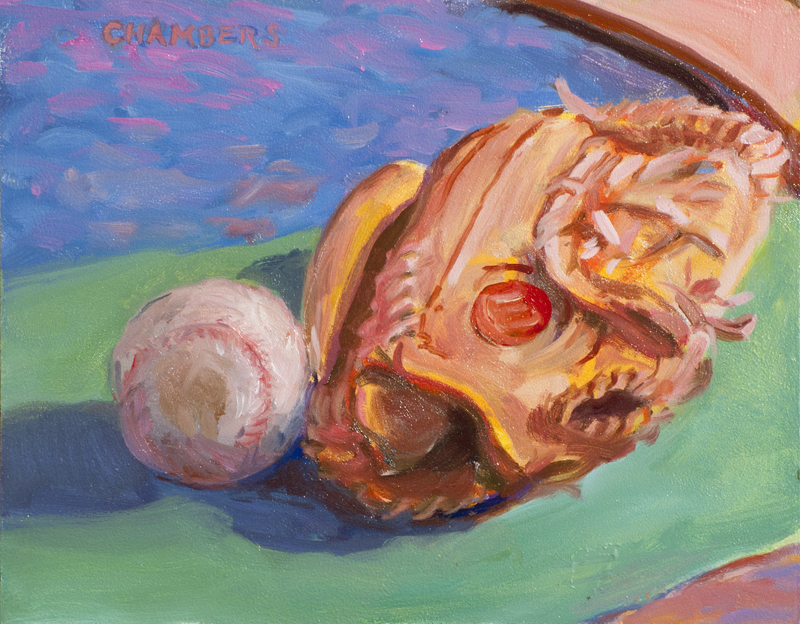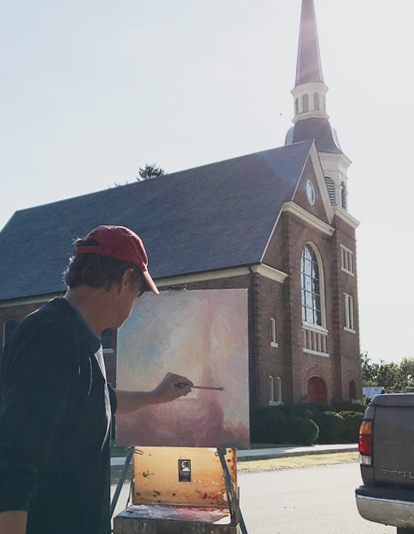How to Prepare a linen canvas for oil painting
Images and description below.
Many have asked about my procedure for painting large pastel paintings. Here’s a visual step-by-step of the process. I initially learned this from my teacher, Joanette Egeli, and have since refined it over the years. It makes for a great surface to work on, is very forgivable, and I love the final look, very much possessing the look of pastel’s older sister, oil.

I tack my canvas to a board (such as Homesote board), cutting it about 6″ larger than I estimate I’ll need.

After sketching out the drawing w/ charcoal, I quickly cover the canvas with acrylic paint. Being that acrylic dries way too fast, I use an extender to increase the open time (mixing time) of the acrylics.
I keep the masses (shapes) large, only breaking them down per changes in value.
I cover the canvas rather quickly, keeping in mind that this is the underpainting to my pastel, yet trying to be as accurate as possible with the color.
A detail of the acrylic lay-in. I enjoy the quick pace and have fun.
After the painting has dried (a couple hours), I squeegee on two or three layers of Golden (brand) Acrylic Ground for Pastel. In a separate cup, I mix the pastel ground with about 20% water to the mix to increase texture and improve flow.
I follow up the squeegee by brushing out the pastel ground with a wide, soft brush. When the ground covers the canvas evenly, I finish with a final smoothing by very lightly dragging my brush over the surface in two perpendicular directions (horizontal and vertical) so as to create a smooth surface for the pastel. Pay special attention to any areas that will demand more detail (e.g. faces, etc.).
The acrylic pastel ground goes on a milky-white, but dries relatively translucent. The blotches you see are where the ground was a little heavier than in other areas. Not an issue, as I’ll be covering this up with pastel. At this point, I am ready to redefine the composition.
When the lay-in is complete, I then finalize the composition and canvas size, marking the painting’s perimeters with charcoal. Keep in mind that standard stretchers are sized every 2″ (24′, 26″, 28″…), so size your painting in even numbers (e.g. 28″ x 36″).
I begin to lightly paint in pastel, establishing my values and color from the get-go. Though the prepared surface will retain a lot more pastel than pastel paper and other surfaces will, there is still a limit to how much it can hold. I use a stiff bristle brush to dust off unwanted pastel (i.e. mistakes!). This surface is very forgiving and has a lot of latitude, allowing you to really develop the painting nicely.
The final painting.






